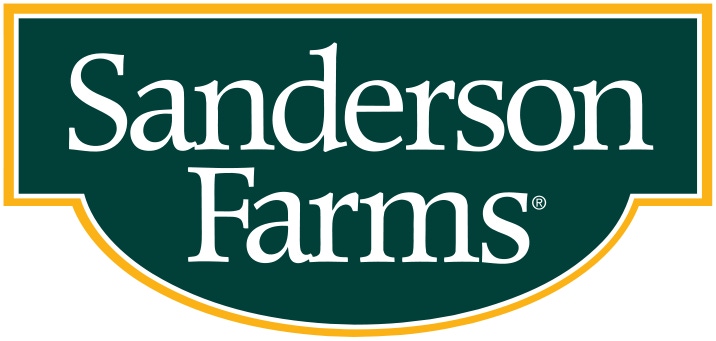Increased operating costs and lower volumes expected to persist through remainder of year.

Sanderson Farms released results for the fiscal third quarter and nine months ended July 31, 2020, which show the impact COVID-19 has had on the company.
Net sales for the third quarter of fiscal 2020 were $956.5 million, compared with $945.2 million for the same period a year ago. Net income was $32.8 million, or $1.48 per share, down from $53.4 million, or $2.41 per share, in the 2019 third quarter. Net sales for the first nine months of fiscal 2020 were $2.62 billion, up from $2.53 billion for the first nine months of fiscal 2019. Net income for the first nine months of 2020 totaled $350,000, or 2 cents per share, compared with net income of $76.2 million, or $3.44 per share, for the first nine months of 2019.
Sanderson Farms said the results for the nine months ended July 31, 2020, include a net discrete income tax benefit of approximately $38.1 million related to net operating loss carry-back provisions allowed by the Coronavirus Aid, Relief & Economic Security (CARES) Act, which became law during its fiscal 2020 second quarter. Excluding this discrete income tax benefit, the company’s net loss for the nine-month period was $37.7 million, or $1.72 per share.
“We continue to face challenging and unprecedented times, both socially and economically,” Sanderson Farms chairman and chief executive officer Joe Sanderson Jr. said. “I am grateful for the dedication and perseverance of our employees, contract poultry producers, customers, vendors, consumers who buy our products and the communities and states in which we operate. With their support, our facilities have been able to continue producing and delivering safe, high-quality and affordable chicken products during this time of great uncertainty. We are also especially thankful for the health care professionals and first responders who continue to work tirelessly to protect the health of our nation.”
Sanderson said the company’s financial results for the third quarter reflect “extreme market volatility for products sold to foodservice customers, continued strong demand for products sold to retail grocery store customers, reduced volumes due to planned egg set reductions implemented during the early stages of the pandemic and lower costs of feed grains.”
Demand for products sold to retail grocery store customers remained strong throughout the quarter. However, the company said it produced 1.23 billion lb. during the quarter, down 60.0 million lb., or 4.7% less than estimated in February, prior to the pandemic.
“This reduction in volume is attributable to planned egg set reductions implemented to compensate for the decrease in demand from our foodservice customers,” Sanderson said.
Overall, realized prices for chicken products sold to retail grocery store customers remained strong during the third quarter, and volumes reflected the strong demand driven by consumers preparing more meals at home. However, Sanderson said the quoted commodity markets for products sold to foodservice customers were lower overall, reflecting the reduced demand caused by the widespread closures of venues where food is consumed away from home.
“While the average quoted market price for boneless breast meat was 3.2% higher during the quarter compared with the third quarter of fiscal 2019, the average market price for bulk leg quarters decreased by 39.1%, the average market price for chicken breast tenders decreased by 26.8% and the average market price for jumbo wings decreased by 13.2%,” he explained.
Sanderson Farms said it is reducing production at its plants that target foodservice customers in response to the decreased demand resulting from the COVID-19 pandemic. As such, the company now estimates total production during the 2020 fourth quarter to be 5% lower than during the 2019 fourth quarter. It noted, “If that projection holds true, our total fiscal 2020 production will be 4.0% higher than our fiscal 2019 production.”
Further, the company has taken numerous actions focused on protecting the health, safety and welfare of its employees as well as to address other operational challenges created by the pandemic. Collectively, however, Sanderson Farms said the actions have increased operating costs and negatively affected volumes and are expected to persist through the remainder of fiscal 2020.
About the Author(s)
You May Also Like





